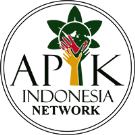ANALISIS KECUKUPAN RUANG TERBUKA HIJAU (RTH) KOTA BATAM
DOI:
10.29303/jbl.v4i2.604Published:
2021-08-03Issue:
Vol. 4 No. 2 (2021)Keywords:
Kota Batam, analisis, ruang terbuka hijauArticles
Downloads
How to Cite
Downloads
Metrics
Abstract
Batam City is an industrial city and has a total area of 1,570.35 km2 with a land area of 715 km2. Following the economic development and increasing population, the green open space in Batam City is decreasing. The purpose of this research was to analyze the adequacy of Batam’s green open space based on the criteria of Law No. 26 of 2007 concerning Spatial Planning and Minister of Public Works Regulation No. 5 of 2008 concerning Guidelines and Utilization of Green Open Space. This research was conducted with a spatial analysis method based on land cover information from the interpretation of Landsat 8 OLI image recording on 05-06-2018. Based on the results showed that Batam’s green open space is still 221.400 ha or 32.05% from land area. It means, Batam City’s open space is still sufficient at least 30% according to Law No. 26 of 2007 and Minister of Public Works Regulation No. 5 of 2008. The largest type of land cover in green open space is secondary dry land forest, covering 79.200 ha (11.45%).
Â
Keyword : Batam City, analysis, green open space.
References
Achsan, A. C. 2016. Analisis Ketersediaan Dan Kebutuhan Ruang Terbuka Hijau Pada Kawasan Pusat Pelayanan Kota. Jurnal Arsitektur Lansekap, Fakultas Teknik, Universitas Tadulako Vol 2. 84.
Brahmantyo, T. Kustiwan, I. 2012. Evaluasi Penyediaan Ruang Terbuka Hijau Sebagai Infrastruktur Hijau di Kota Bogor dan Cirebon. Jurnal Perencanaan Wilayah dan Kota, 2(1): 54-60.
Departemen Pekerjaan Umum. 2006. UU No. 26 Tahun 2007 tentang Penataan Ruang.
Jaya, I.N.S. 2010. Analisis Citra Digital : Perspektif Penginderaan Jauh untuk
Pengelolaan Sumber Daya Alam. Institut Pertanian Bogor Press. Bogor.
Julius, R. R. 2014. Strategi Pemerintah Kota Pekanbaru Dalam Meningkatkan Ruang Terbuka Hijau Di Kota Pekanbaru. Jurnal FISIP Universitas Riau. Hal 2.
Kementerian Lingkungan Hidup dan Kehutanan. 2015. Rekalkulasi Penutupan Lahan Indonesia Tahun 2014. Direktorat Inventarisasi dan Pemanfaatan Sumber Daya Hutan, Direktorat Jenderal Planologi Kehutanan dan Tata Lingkungan dan Kementerian Lingkungan Hidup dan Kehutanan Tahun 2015.
Keputusan Presiden Nomor 41 Tahun 1973 Tentang Daerah Industri Pulau Batam.
Lillesand, T. M., Kiffer, R.W. 1990. Penginderaan Jauh dan Interpretasi Citra. Gadjah Mada University Press. Yogyakarta.
Maharani, Kurniasih., Chaidir, A., Sangaji, Aditya, Diah, A. P. 2017. Kota Batam Dalam Angka 2017. Badan Pusat Statistik Kota Batam: Batam.
Manandhar, R. 2009. Improving the Accuracy of Land Use and Land Cover Classification of Landsat Data Using Post-Classification Enhancement. Remote Sensing 1: 330-344.
Peraturan Menteri Pekerjaan Umum. No. 5 Tahun 2008. Pedoman Penyediaan dan Pemanfaatan Ruang Terbuka Hijau di Kawasan Perkotaan Nomor : 05/PRT/M/2008. Direktorat Jendral Penataan Ruang, Departemen Pekerjaan Umum, Jakarta.
Silviana, M. 2019. Monitoring Perubahan Tutupan Lahan Hutan lindung Bukit Suligi Kabupaten Kampar Provinsi Riau. Universitas Riau. Pekanbaru.
USGS. 2016. Landsat 8 (L8) Data User Handbook. Department of the Interior U.S. Geological Survey Vol 2.0.
Author Biographies
Shirly Indriana Putri, Universitas Riau
Nurul Qomar, Universitas Riau
Yossi Oktorini, Universitas Riau
License
The Authors submitting a manuscript has understood that if accepted for publication on Jurnal Belantara, the copyright of the article shall be assigned to Jurnal Belantara of the Forest Study Program University of Mataram as the publisher of the journal. Copyright encompasses rights to reproduce and deliver the article in all forms and media, including reprints, photographs, microfilms, and any other similar reproductions, as well as translations.
Jurnal Belantara of the Forest Study Program University of Mataram and the Editors make every effort to ensure that no wrong or misleading data, opinions, or statements be published in the journal. In any way, the contents of the articles and advertisements published in Jurnal Belantara are the sole responsibility of their respective authors and advertisers.
We strongly encourage that manuscripts be submitted to the online journal system in http://belantara.unram.ac.id/index.php/JBL/index. Authors are required to create an account and submit the manuscripts online. For submission inquiries, please follow the submission instructions on the website. If the author has any problems with the online submission, please contact Editorial Office at the following email: [email protected]
Contributors are responsible for obtaining permission to reproduce any materials, including photographs and illustrations, for which they do not hold the copyright and for ensuring that the appropriate acknowledgments are included in the manuscript.
Users of this website will be licensed to use materials from this website following the Creative Commons Attribution 4.0 International License. No fees charged. Please use the materials accordingly.











